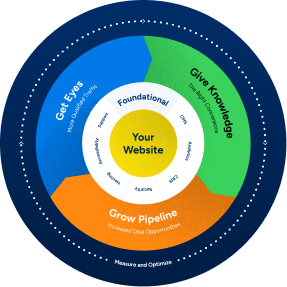The online world is nothing short of a jungle. There are countless businesses, all trying to elbow each other out of the way as they compete for the attention of a massive, but shared, audience. It’s tough to get an internet user’s attention, but it’s another game altogether when it comes to convincing someone to actually take a step toward investing in your brand.
Pay per click (PPC) ads are a key tool in sparking this type of movement. PPC ads are targeted, purposeful, and designed to attract an audience that’s primed to convert. All that said, there’s a magical key to making all of this happen, and it’s called a landing page.
Landing pages are among your most effective conversion tools, but they’re only as good as your ability to design them for optimized results. Landing page design requires a dedicated, strategic approach if you want to encourage action. In the ever-changing digital environment, it’s important to stay on top of the trends and consumer preferences in landing page design. If you’ve got a PPC campaign that you’re excited about, here’s what you need to know about fueling its success with a few landing page best practices.
Why Do You Need a Landing Page?
Ok, before we dig into a few best practices for successful landing page design, let’s take a step back and talk about why you even need a landing page in the first place. Is it really necessary to create a standalone page for your PPC campaigns when you’ve already invested in a website that’s designed to convert?
The answer is without question, yes.
A landing page is a stand-alone page with the sole intent of encouraging one very specific action. It might be signing up for a newsletter, downloading an eBook, or something completely conversion focused. Whatever the intent of your landing page, it should help keep the visitor focused on the goal – which is something your website might fall short on.
Websites are complex. They often serve as the main point of contact along the entire customer journey. They can be the point where the first introduction is made and then proceed to meet the visitor at every stopping point as they move toward conversion. The downside here is that websites can be distracting. There are a lot of elements to pull the visitor’s attention away from the goal, and there also might be a few things that cause them to second guess their decision to connect with you – both of these are negatives for your PPC campaigns.
Landing pages, at least the well-designed ones, limit distractions and provide just enough of the right information to encourage the visitor to take the next step. Without a well-designed landing page, your PPC ad is likely to underperform and cost your business money.
Landing Page Best Practices
Ok, we know why landing pages are important, but what’s the secret to designing pages that perform? Here are five best practices that should be followed to optimize the results of your PPC campaigns.
1. Separate Is Good
If your PPC ad strategy includes multiple campaigns, it’s a good idea to build separate landing pages for each one. To understand why, think about your reasoning for creating separate ads. You might want to target different segments of your audience or reach them through different platforms. Regardless of the “why”, there’s something about each ad that’s requires a slightly different approach. This should be followed through with a landing page that’s designed to convert the specific audience segment the PPC ad was designed to attract.
2. Don’t Let Them Get Away
One of the design elements that sets landing pages apart from the rest of your website is that the most successful ones don’t contain the navigational elements that are so crucial to web design. The goal is to limit distractions and keep the visitor on your landing page until they buy into your offer. Eliminating the ability to navigate to other pages of your website or social media pages keeps the visitor focused and on task.
3. Be Responsive
The segment of your audience that’s reaching your landing page through their mobile devices is too large to be ignored, and it’s ever growing. Landing pages, with all their elements and forms aren’t intuitively mobile friendly. It’s worth the effort to create landing pages that implement responsive design so you don’t miss out on an opportunity to connect, simply because of the device the visitor was using.
4. Don’t Let SEO Fall to Side
Yes, it was a PPC ad that led the visitors to your site, but that doesn’t mean that your landing pages can’t benefit from a little search engine optimization. Keep SEO in mind by using important keywords, especially local and voice search keyword. Don’t forget to infuse your landing page content with value – no matter how sparse it is.
5. Match User Intent
There’s nothing more frustrating for an internet user than to click on ad, and then find themselves on a landing page that isn’t aligned to the link that brought them there. When designing your landing pages, make sure each page matches the intent of the originating link. For instance, a car dealership with a PPC ad that promotes a discount incentive on family vehicles is going to turn people away if their landing page features luxury vehicles.
Landing Pages that Convert
This is only the beginning of creating landing pages that are designed for conversion. There are more ways that you can optimize the performance of your landing pages, and we’d like to help you discover all of them. When you’re looking for a PPC agency that can help you meet your goals, we’re the Boston PPC professionals that know exactly how to generate performance from your landing pages. GoingClear is the agency you can trust to deliver results. Contact GoingClear to speak directly to one of our web design and digital marketing professionals today.

